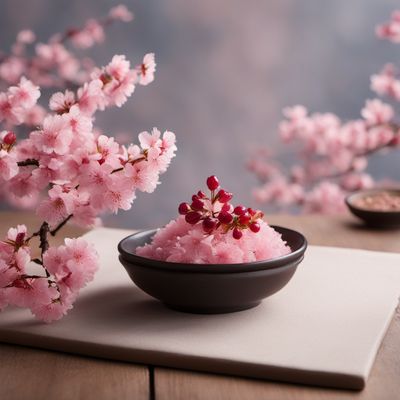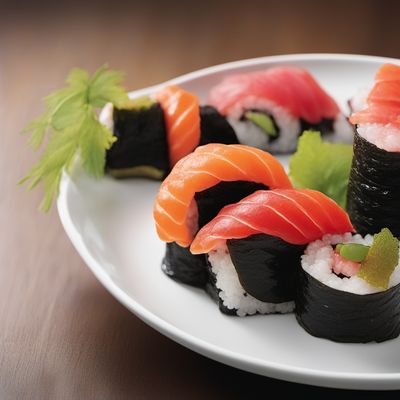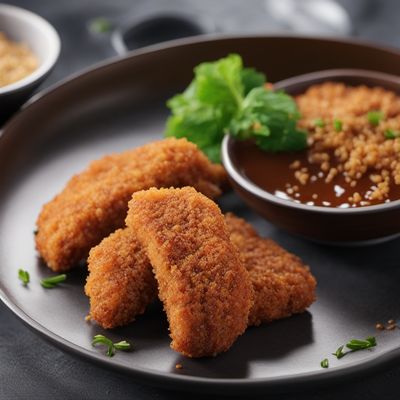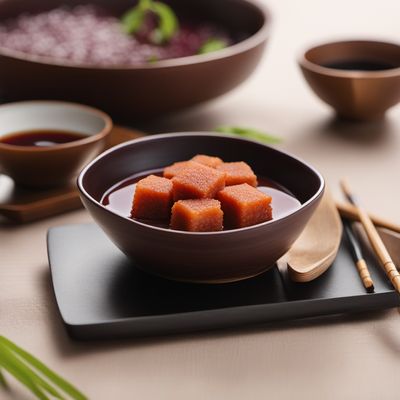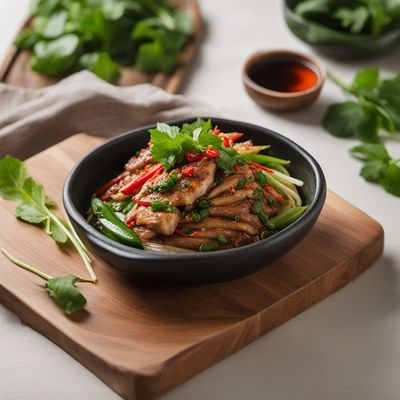
Recipe
Lao-style Coconut Sticky Rice with Mango
Tropical Delight: Lao Coconut Mango Sticky Rice
4.7 out of 5
Indulge in the flavors of Laos with this delightful twist on the traditional Japanese sakuramochi. Lao-style Coconut Sticky Rice with Mango combines the creamy richness of coconut milk-infused sticky rice with the sweet and tangy taste of ripe mangoes, creating a tropical dessert that will transport you to the heart of Southeast Asia.
Metadata
Preparation time
15 minutes (excluding soaking time)
Cooking time
30 minutes
Total time
45 minutes (excluding soaking time)
Yields
4 servings
Preparation difficulty
Easy
Suitable for
Vegan, Vegetarian, Gluten-free, Dairy-free, Nut-free
Allergens
N/A
Not suitable for
Paleo, Keto, Low-carb, High-protein, Raw food
Ingredients
While sakuramochi is a Japanese dessert made with glutinous rice flour and filled with sweet red bean paste, Lao-style Coconut Sticky Rice with Mango takes inspiration from the flavors of Laos. The dish replaces the red bean paste with fresh mango slices and infuses the sticky rice with coconut milk, giving it a creamy and tropical twist. This adaptation highlights the use of local ingredients and flavors commonly found in Lao cuisine. We alse have the original recipe for Sakuramochi, so you can check it out.
-
2 cups (400g) glutinous rice 2 cups (400g) glutinous rice
-
1 1/2 cups (360ml) coconut milk 1 1/2 cups (360ml) coconut milk
-
1/4 cup (50g) sugar 1/4 cup (50g) sugar
-
1/2 teaspoon salt 1/2 teaspoon salt
-
2 ripe mangoes, sliced 2 ripe mangoes, sliced
-
Toasted sesame seeds, for garnish Toasted sesame seeds, for garnish
Nutrition
- Calories (kcal / KJ): 380 kcal / 1590 KJ
- Fat (total, saturated): 14g, 12g
- Carbohydrates (total, sugars): 61g, 20g
- Protein: 5g
- Fiber: 2g
- Salt: 0.3g
Preparation
-
1.Rinse the glutinous rice under cold water until the water runs clear. Soak the rice in water for at least 4 hours or overnight.
-
2.Drain the soaked rice and transfer it to a steamer lined with cheesecloth. Steam the rice over medium heat for 25-30 minutes, or until the grains are tender and translucent.
-
3.In a saucepan, combine the coconut milk, sugar, and salt. Heat the mixture over low heat, stirring until the sugar has dissolved.
-
4.Transfer the steamed rice to a mixing bowl and pour the coconut milk mixture over it. Stir gently to coat the rice evenly. Let it sit for 15-20 minutes to allow the rice to absorb the flavors.
-
5.Serve the coconut sticky rice with slices of ripe mango on top. Sprinkle with toasted sesame seeds for added texture and flavor.
Treat your ingredients with care...
- Glutinous rice — Ensure that the rice is soaked for the recommended time to achieve the desired texture. Steaming the rice helps it become tender and sticky.
- Coconut milk — Use full-fat coconut milk for a rich and creamy flavor. Shake the can well before using to ensure the cream is well mixed with the liquid.
Tips & Tricks
- Soaking the rice overnight will yield the best results in terms of texture.
- To enhance the coconut flavor, you can add a pandan leaf to the coconut milk mixture while heating it.
- For an extra touch of sweetness, drizzle some coconut syrup or honey over the mango slices before serving.
- If mangoes are not in season, you can substitute them with other tropical fruits like pineapple or papaya.
- Leftover sticky rice can be stored in the refrigerator for up to 2 days. Reheat it gently in a steamer or microwave before serving.
Serving advice
Serve Lao-style Coconut Sticky Rice with Mango warm or at room temperature. It can be enjoyed as a dessert or a sweet snack. For an authentic Lao experience, serve it on a banana leaf or in a small bamboo basket.
Presentation advice
Arrange the slices of ripe mango on top of the coconut sticky rice in an attractive pattern. Sprinkle toasted sesame seeds over the dish for added visual appeal and a nutty flavor.
More recipes...
More Japanese cuisine dishes » Browse all

Melonpan
Melonpan is a sweet bread from Japan that is shaped like a melon. It has a crispy outer layer and a soft, fluffy interior. It is a popular snack...

Ika nigiri sushi
Squid Nigiri
Ika nigiri sushi is a traditional Japanese dish that consists of a small ball of sushi rice topped with a slice of fresh squid. The dish is...

Kasutera
Castella Cake
Kasutera, also known as Castella, is a traditional Japanese sponge cake that is made with flour, sugar, and eggs.
More Lao cuisine dishes » Browse all
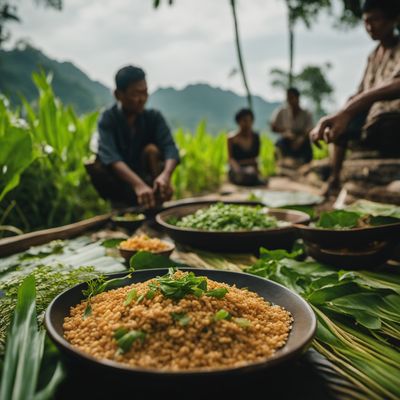
Kaipen
Kaipen is a traditional dish from Laos that is made with river weed.

Rat Stew
Rat stew is a dish that is made from rat meat and is a popular dish in some parts of the world. It is a controversial dish that is often...

Nam khao
Crispy Rice Salad
Nam khao is a traditional Laotian dish that is made with crispy rice and pork. It is a popular street food in Laos and is often served as an...
